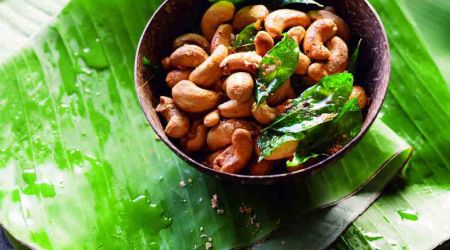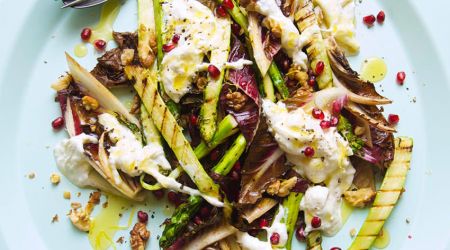Nuts
Christmas without knobbly walnuts, glossy chocolate brazils and moist, savoury chestnut stuffing? Inconceivable, says Helen Hokin
Nature gives us nuts, seal-wrapped and ready to go, in sturdy little brown packages of fibre, protein and fat. In December, when the sun and our energy levels are low, their buttery texture comforts while their good fats galvanise. And they ensure that there’s still a little crunch in the diet long after the crisp vegetables of summer have disappeared. Long favoured by vegetarians for their protein, and used throughout history as emergency rations when other forms of sustenance are scarce, they are nature’s original whole food.
Nuts grace everything from chocolate to venison with texture and depth. Their high monounsaturated fat content, however, although a nutritional boon, means they are liable to turn rancid quickly, so buy them as fresh as possible and keep them refrigerated in a sealed container. A few pointers: shelled nuts should feel heavier than they look and have a polished finish. Avoid dull, cracked shells or a hollow-sounding rattle. Shelled nuts should be plump and even-coloured, but to double their shelf life it’s better to buy them with the shell still on. A light toasting will enhance their flavour, but watch out – one minute they’re golden, the next they’re black and smoking.
Chestnuts differ from other nuts since they must be cooked before eating. First remove both the outer and inner skins. Remember to score each nut before roasting or you’ll experience a volley of explosions as they burst and ricochet around your oven. The starchy-sweet combination, unusual for a nut, works well with bacon, brandy, root vegetables, game, mushrooms, chocolate, coffee and cream. They add both richness and texture to stuffing and tarts, and are also wonderful on their own as soup. Throw a handful in with Brussels sprouts and bacon and serve with roast venison or turkey.
While chestnuts might grace our festive tables today, for centuries the English dismissed them as farmyard fodder. Elsewhere in Europe, though, they have inspired a couple of right royal recipes: marrons glacés, the glistening, glamorous, killer-sweet confection, de rigueur at French Christmas celebrations. And remember that retro party piece, Mont Blanc? The show-off mountain of brandy-laced chestnut purée and whipped cream is surprisingly easy to make. Pass the purée through a potato ricer so it falls in a pyramid shape, as high as you like. Finish with a snowfall of cream for a stunning centrepiece. And what of a bag of roasted chestnuts hot from a street seller: sweet on the tongue, warm on the fingers, eaten on a fading winter afternoon.
Walnuts were the first brain food. Noticing a close resemblance between its two adjoining halves and the human brain, the Greeks and Romans would pop a couple as a headache remedy. That’s when they weren’t showering them on newly-weds as a symbol of fertility. When fully ripe, the creamy white nut goes beautifully with all manner of foods, including apples and pears, celery, dates, figs and, of course, chocolate. Remove the bitter skin from older nuts by standing them for ten minutes in hot water, then drying them vigorously with a tea towel. Crack open a few fresh walnuts, pair them with shards of hard goat’s cheese, and you have an instant and delicious supper. A classic date and walnut cake, moist and rich with fruit and spices, is dark as the winter solstice. Cheer a cold day by serving up a warm pear and walnut tart with bubbling Roquefort cheese, or pickled walnuts and a slice of warm walnut and raisin loaf. Winter’s really not all bad.
And finally, the true herald of Christmas: the brazil nut. This jewel on the crown of the tallest of nut-bearing trees ripens in the Amazon basin, a dizzying 50 metres above ground. The nuts are too high to harvest, so pickers must wait until a gust of wind sends them tumbling down. Their 65 per cent oil content accounts for their unusually mild, creamy taste and velvety texture. Brazil nuts add a touch of class to cakes, biscuits and winter fruit salads. They are also superb on their own. What better treat to find in your Christmas stocking?

Recipes
Get Premium access to all the latest content online
Subscribe and view full print editions online... Subscribe



